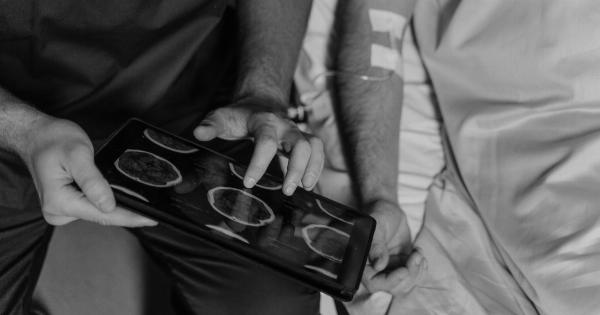Testicular self-examination is an essential step in maintaining good reproductive health.
This easy and quick self-examination doesn’t require any special equipment or a visit to the doctor’s office, and it could help detect potential issues such as testicular cancer, one of the most common cancers among young men. Here’s a step-by-step guide to conducting a testicular self-examination.
Why is Testicular Self-Examination Important?
Testicular self-examination (TSE) is a vital part of preventive healthcare for men. This examination involves checking the testicles for any abnormalities or changes. The testicles are responsible for producing reproductive hormones and sperm.
Examining the testicles regularly allows you to detect issues such as cysts, tumor, or other issues such as inflammation that can lead to serious health problems, including infertility or cancer.
Testicular cancer is rare, but it is the most common form of cancer among young men aged 15 to 35 years old. Fortunately, this type of cancer is very treatable if detected early.
Regular self-examinations can help detect any changes in your testicles, so you can seek immediate medical attention if necessary.
When Should You Perform A Testicular Self-Examination?
There is no strict rule on when to perform a testicular self-examination. However, it is recommended that one should conduct it every month or every three months if you are at higher risk of testicular cancer.
Factors that can increase the risk of testicular cancer include a personal or family history of testicular cancer, cryptorchidism (one or both testicles didn’t descend into the scrotum), and being born with an abnormality of the testicles, among others. Talk to your doctor to determine if you are at risk and the recommended frequency of the self-examination.
How to Conduct a Testicular Self-Examination
Conducting a testicular self-examination is simple and quick. It only takes a few minutes and can be done in the comfort and privacy of your own home.
You should start by examining your testicles in front of the mirror for any swelling or changes to the size, shape, or color of your testicles. Then, you can proceed to complete the self-examination while standing, sitting, or lying down. The following are the step-by-step instructions on how to conduct a testicular self-examination:.
Step 1: Prepare yourself
Start by finding a comfortable and quiet place as no one will disturb you while conducting the examination. The examination is best conducted after a bath or shower when the skin of the scrotum is relaxed.
You should stand in front of a mirror and examine your testicles before proceeding to the self-examination.
Step 2: Examine the Scrotal Skin
Examine the skin of the scrotum for any rash, irritation, or swelling. The scrotum should be free of any lumps or bumps. If you find any lumps or bumps, contact your doctor immediately.
Step 3: Check the Testicles one at a Time
Hold one testicle between your thumb and finger and gently roll it between your fingers. Start at the top of the testicle and move downward. Repeat the process on the other testicle.
Step 4: Check for Lumps or Bumps
Check for any lumps or bumps on the surface of the testicle. If you are having difficulty finding any lumps or bumps, it may be helpful to hold the testicle between your fingers and firmly press it against the scrotal skin.
Any lump or bump that you might come across should be reported to your healthcare professional.
Step 5: Check for Pain or Discomfort
Check for any pain or discomfort while examining your testicles. A slight ache or discomfort may be considered normal, but severe pain or tenderness requires a doctor’s attention.
Step 6: Examine the Epididymis
The epididymis is the soft, tube-like structure located at the back of each testicle. Gently examine it for any irregularities, lumps, or swelling. Remember that it is normal for the epididymis to feel slightly lumpy or swollen.
What to Do if You Find an Abnormality?
If you find any lumps, bumps, pain, or swelling during the examination, do not panic. Not every abnormality is serious, and some might even resolve on their own.
However, it is always a good idea to visit your doctor so they can help you determine if the abnormality is cancerous or not. Your doctor may recommend follow-up visits, some tests such as ultrasound, or blood tests to determine the cause of the abnormality or refer you to a specialist to perform further tests and treatments if necessary.
The Bottom Line
Testicular self-examination is an important preventive healthcare measure for every man. Early detection can help improve the chances of successful treatment if there is an issue.
Performing a self-examination every month or three months if you are at risk of testicular cancer will only take a few minutes and can easily be incorporated into your health routine. If you find any lumps, pain, or other abnormalities, do not ignore them. Consult your doctor immediately for advice and treatment.





























